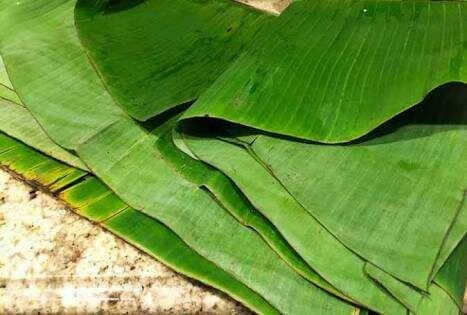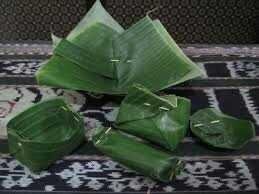Typical Food Packaging Techniques Area

Sourcephoto
Traditional food is a typical food and beverage consumed by a certain community, with a distinctive flavor that is accepted by the community. For the people of Indonesia are generally believed to be efficacy, various traditional foods, such as tempeh, tofu, garlic, honey, temulawak, gado-gado, green beans, sea fish, land fish etc.
Besides efficacy, traditional Indonesian food also contains other positive aspects such as: Natural ingredients, high nutritious, healthy and safe, cheap and easy to obtain, in accordance with the tastes of people who are believed to have good potential as food.
The first known packing of food was to use natural ingredients available at the time: baskets of reeds, leather bags (ball bags), wooden boxes, pottery vases, amphorae ceramics, wooden barrels, wicker bags, etc. Traditional food of a region may differ in other regions, for example fermented products from cassava in Central Java and East Java known as tape, while in West Java it is referred to as Peuyeum.

Variety of traditional food packaging that often encountered such as packaging by using banana leaves, corn kelobot (midrib leaves), coconut / palm leaves (leaves), water leaf and teak leaves.
Leaf
Widely used, safe and bio-degradable, usually banana leaves, teak leaves, bamboo leaves, maize leaves and palm leaves. More safe to use in the heating process than plastic.
Pottery
Used since ancient times, safe for food origin does not contain lead. The glazed pottery is water-resistant, airtight, capable of inhibiting microbes, and is cold so it is suitable for packing foodstuffs such as sauce, honey, wine, oil, curd / curd etc.
Packaging, above aims to protect food from damage, is also a lure for people to be tempted to enjoy it. In its development, humans began to use packaging materials that are specially formed for packaging purposes, namely by making glass packaging material, then from bronze.
One type of typical food area that is packed with banana leaves is lontong. Lontong is a food made from rice that is an innovation with the aim to enjoy rice in other forms. In general lontong is cooked food and packed with banana leaves.
But now, because the more rare or difficult to get a banana leaf, lontong packaging is now dikreasikan by using plastik.Namun, may taste lontong with packs or plastic packaging is not as good when using banana leaves. For those who have lots of banana trees in the garden, wearing banana leaves as lontong packs may be a pretty good choice.
But keep in mind, not all bananas are good for packing, due to different physical properties, especially the nature of flexibility. How to use it can be directly or through the process of pelayuan first, this is to further flex the leaves so it is easy to fold and not torn or broken.
As well as on the packaging of glutinous tape, this product contains a lot of water, so with a slippery surface, low absorbing heat, impermeable and air, it is suitable for use to pack.
Differences in the name / name of traditional food products are similar in different regions followed by different use of packaging for the product. Variety of traditional food packaging that often encountered such as packaging by using banana leaves, corn kelobot (midrib leaves), coconut / palm leaves (leaves), water leaf and teak leaves.
The way of packaging is done in various ways as can be seen in the following table.
| How to package | Packaging materials | Example |
|---|---|---|
| Roll | Banana leaf Bamboo leaves | Rice cake(lontong) |
| Folded | Banana leaf Guava leaves | Nagasari, tempe, tape |
| Bandage | Banana leaf Coconut leaves | Lemper, leupeut |
| Weaving | Coconut leaves | Ketupat |
note: Indonesia traditional food
Source from Book
Thanks for reading my article

The banana leaves very tasty smell when using to package food.